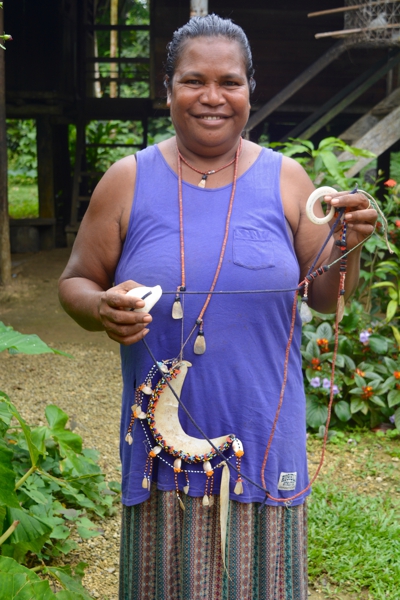Boi Boi, Woodlark, PNG Part 1.

Lochmarin
Sat 27 Aug 2016 21:36
09:06.187S 152:40.087E  Coming through the China Strait - it’s that gap on the left hand side. We didn’t have much idea of what we would find on Woodlark. Ian in Samarai had said it was an interesting place and had a gold mine. The pilot book had one sentence for the bit we were heading to: “The only settlement on the island, situated two miles inland from the head of Kwaiapan bay, is unhealthy.” Unhealthy in what way? Malaria? Leprosy? Venereal Disease? We were hoping things had improved since 1970. Indeed they had. It’s a bit of a trek to get to, one has to come through the pass in the outer reef and then followed the channel up the lagoon for 15 miles or so to get to the anchorage. The little strip of channel had been surveyed but to either side of us the chart was blank, simply saying “No hydrographic survey has been conducted. Unidentified shoals, reefs and ther navigational hazards may be encountered”. It was worth the trip. We found a beautiful village filled with welcoming, friendly and gentle people. Children ran to the small dock to wave and call a welcome but there was no rush of canoes to us, rather they waited for us to call them over or for us to come ashore ourselves.  One of the houses of the village, seen from our deck. The chap in blue is fishing.  Laden boats from Alotau arrive at the old wood dock having sailed about 150 miles over open seas. On the dock was Willy, with the only truck we saw during our stay. He was down to pick up supplies as the Alotau boats, which come every couple of weeks or so, were due in later that day. He welcomed us, asked Geoffrey to show us around the village and offered to take us up to see the gold mine. Since the mine closed, 6 years ago, Willy has been in charge of the mothballing operation. He is clearly a man of standing in the community. Phil was especially interested in the mine as it reminded him of so many oil drilling sites he’d visited as a young man and Willy loved showing the place to someone who understood how it all works. I was pleased to be able to explore further into the island and see ebony trees.  Willy shows us the mine.  A swimming pool, for washing people and clothes. On the way back Willy stopped at his house to show us some family heirlooms: necklaces used as a ceremonial part of the Kula trading Ring that Malinowski described so well in the 1920s. Woodlark, although not part of the Trobriands, was the Easternmost island in the trading ring. Upon our return to the dock Willy overwhelmed us by giving us a beautiful old ebony carving. It was just the sort of thing we had been hoping we might come across whilst in PNG. We had nothing we could offer in return that would equal it and could only give a token of our appreciation and our heart felt thanks.   Willy’s wife models the necklace - it’s the small red coral beads that are important, and Willy’s son’s house. |